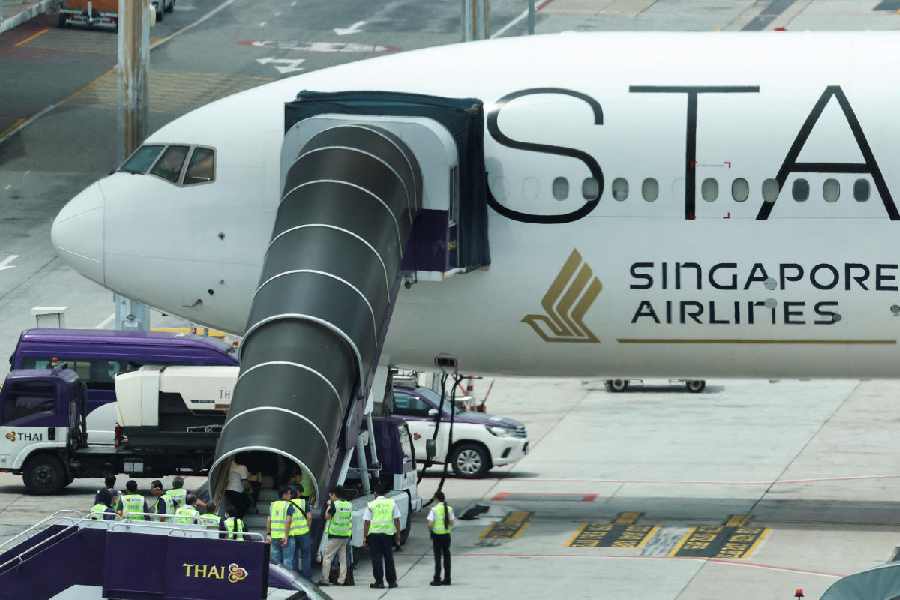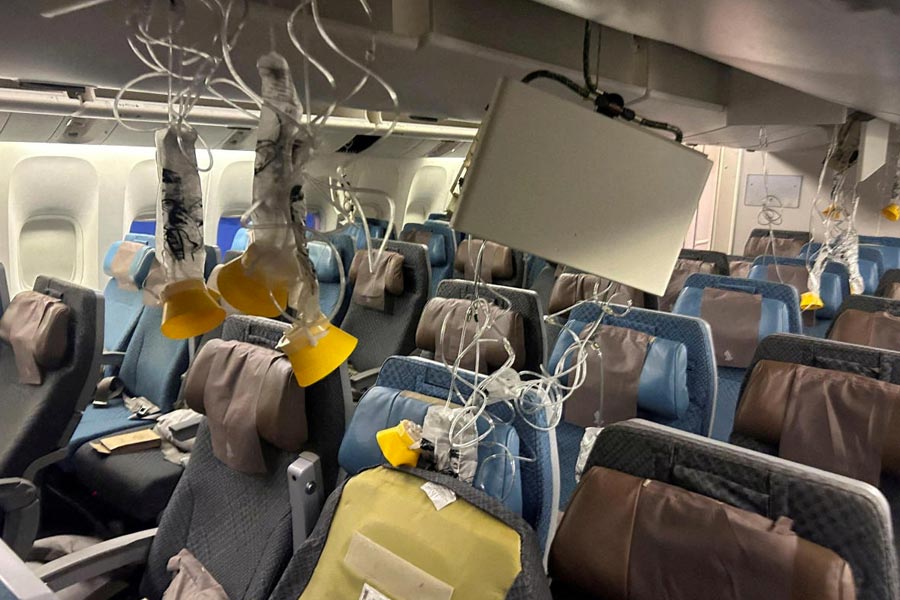A rapid change in gravitational forces over 4.6 seconds resulted in an altitude drop of 178 ft to the Singapore Airlines flight last week, which likely caused injuries to crew and passengers, according to the findings of a preliminary investigation into the severe turbulence incident released on Wednesday.
On May 21, Flight SQ321, which was heading to Singapore from London, experienced sudden severe turbulence over the Irrawaddy Basin in Myanmar during the breakfast service. One British passenger died while dozens were injured. Passengers described the incident as frightening.
The initial report issued by investigators from the Transport Safety Investigation Bureau (TSIB) is based on a preliminary analysis using the data stored in the flight data recorder and cockpit voice recorder on board the aircraft, The Straits Times newspaper reported.
Investigators found that the aircraft, a Boeing 777-300ER, was flying at its cruise altitude of 37,000 ft south of Myanmar and near an area of developing storms in the afternoon when turbulence started to cause fluctuations between +0.44g and +1.57g for 19 seconds.
G-forces measure the rapid acceleration or deceleration by comparing it to the normal pull of gravity on Earth, which is considered +1g. Hence, at +1.57g a person would feel like they were 1.57 times their body weight.
On board SQ321, the passengers would also start to experience the plane beginning to vibrate slightly. The aircraft started to climb, reaching 37,362 ft in altitude. It was at this point that the plane’s autopilot tried to bring the plane down to its set cruise altitude, with the pilots turning on the seat belt sign.
Eight seconds later, the plane experienced a rapid change in G-forces from +1.35g to -1.5g within 0.6 seconds. Negative G-forces move opposite the direction of gravity, causing people to experience a sensation of “lightness” or “floating.” In SQ321’s case, it caused the passengers and crew who did not manage to fasten their seat belts to become airborne, and the G-forces went from -1.5g back again to +1.5g in four seconds. This caused the aircraft to drop from 37,362 ft to 37,184 ft and all airborne passengers to fall back down.
“The rapid changes in G over the 4.6-second duration resulted in an altitude drop of 178 feet ... this sequence of events likely caused the injuries to the crew and passengers,” the report said.
During this time the pilots tried to retain control of the aircraft in a bid to stabilise it, disengaging the autopilot in the process, before re-engaging it and starting a descent to divert into Bangkok’s Suvarnabhumi Airport, landing at 4.45 pm.
The TSIB is the air, marine and rail accidents and incidents investigation authority in Singapore and is part of the Ministry of Transport. The investigation team was composed of TSIB investigators and representatives from the US' National Transportation Safety Board, Federal Aviation Administration and aircraft manufacturer Boeing.
In a statement on Wednesday, SIA acknowledged the preliminary findings from TSIB and said it is fully cooperating with the authorities in the ongoing investigations.
The airline said it is committed to supporting the passengers and crew members on board SQ321, including covering their medical and hospital expenses, as well as any additional help they may need. There were three Indian nationals on the flight.
"We deeply appreciate the invaluable assistance provided by the governments of Singapore and Thailand, as well as our many partners and the medical teams in both countries and around the world,” SIA said.
Except for the headline, this story has not been edited by The Telegraph Online staff and has been published from a syndicated feed.












